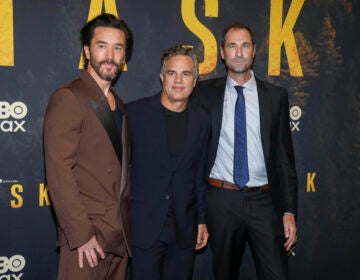Guided by impression and free association, Dutch artists chart emotional map of Philly
Listen-

-

-
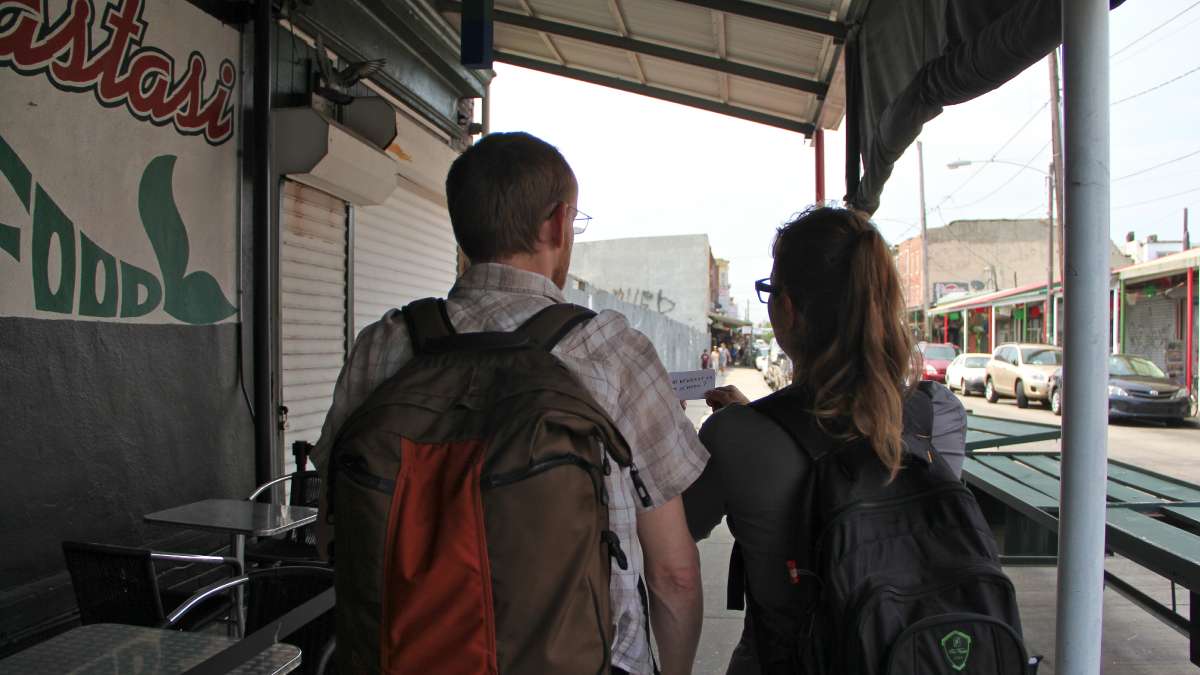
-

-
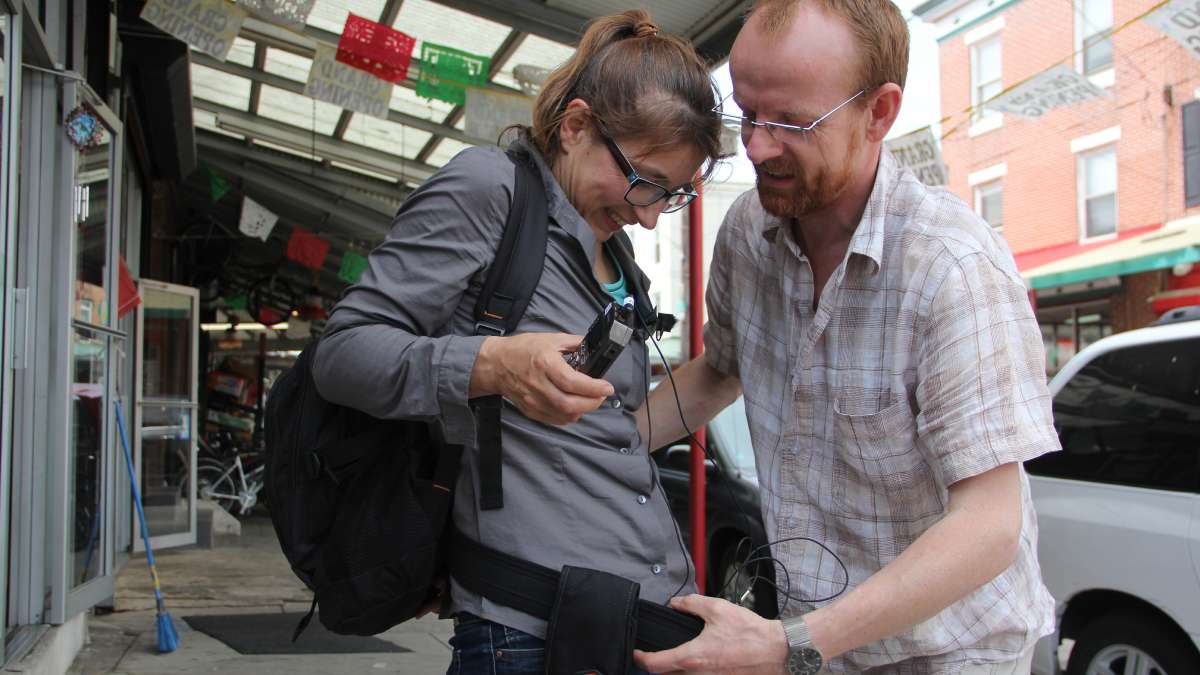
-
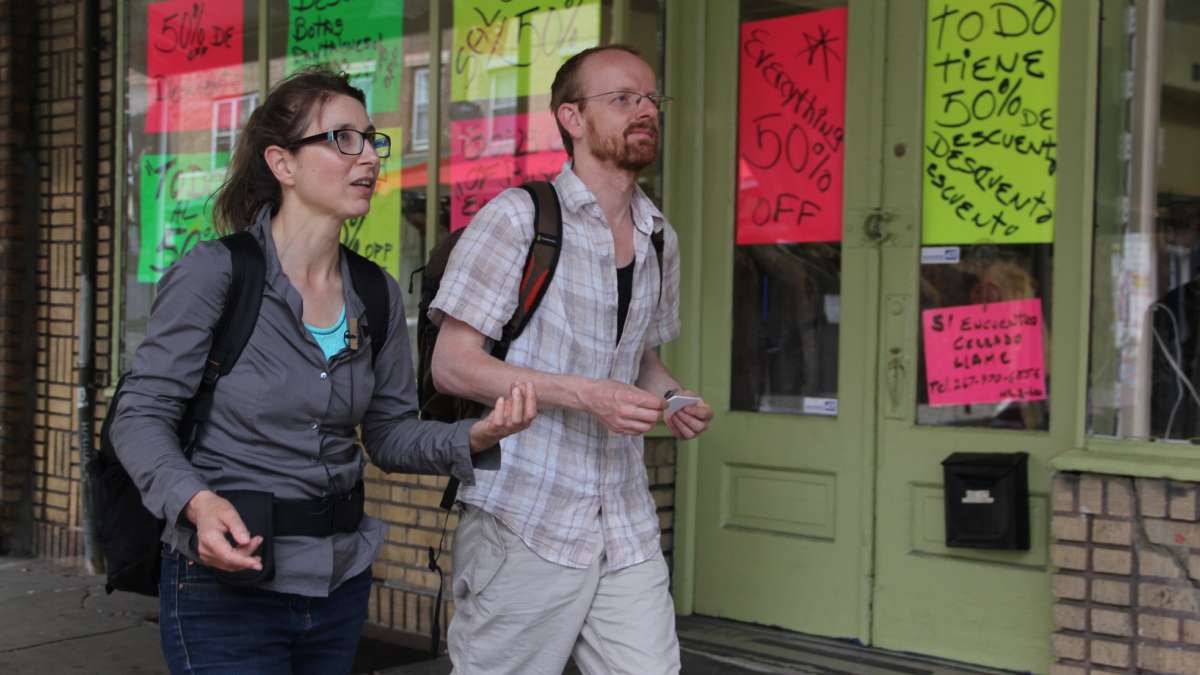
Esther Polak, with her partner Ivar van Bekkum, records her reactions to the Italian Market. The recordings will be the narration of a movie created in Google Earth. (Emma Lee/WHYY)
-
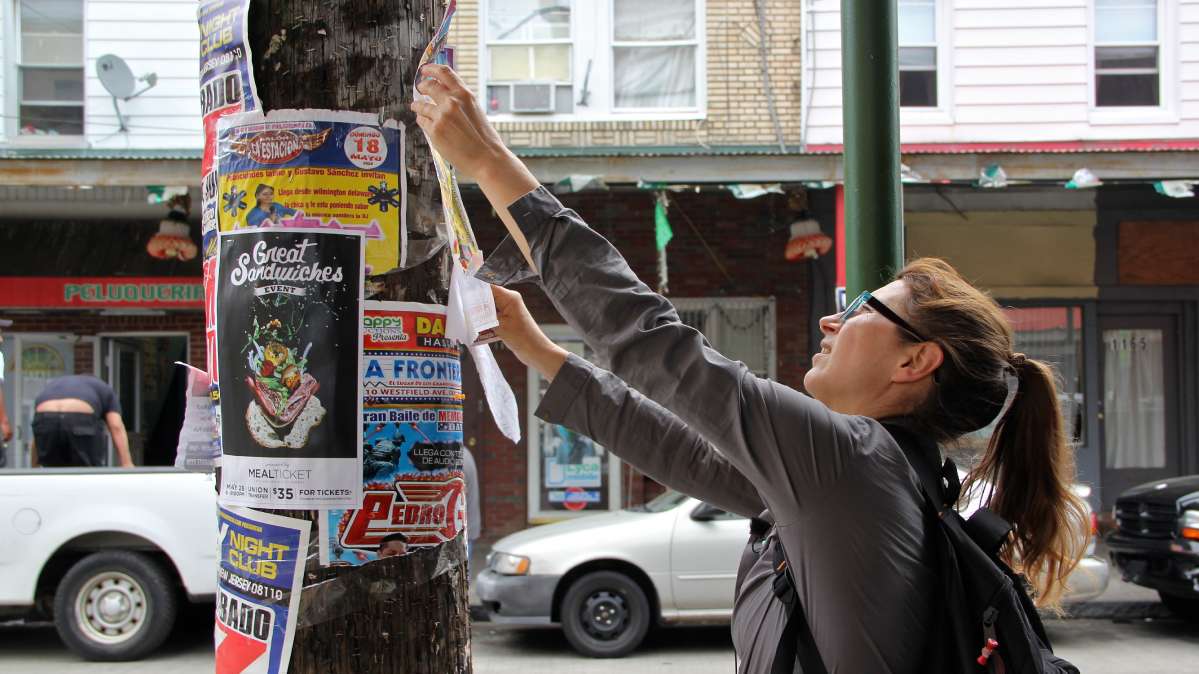
-
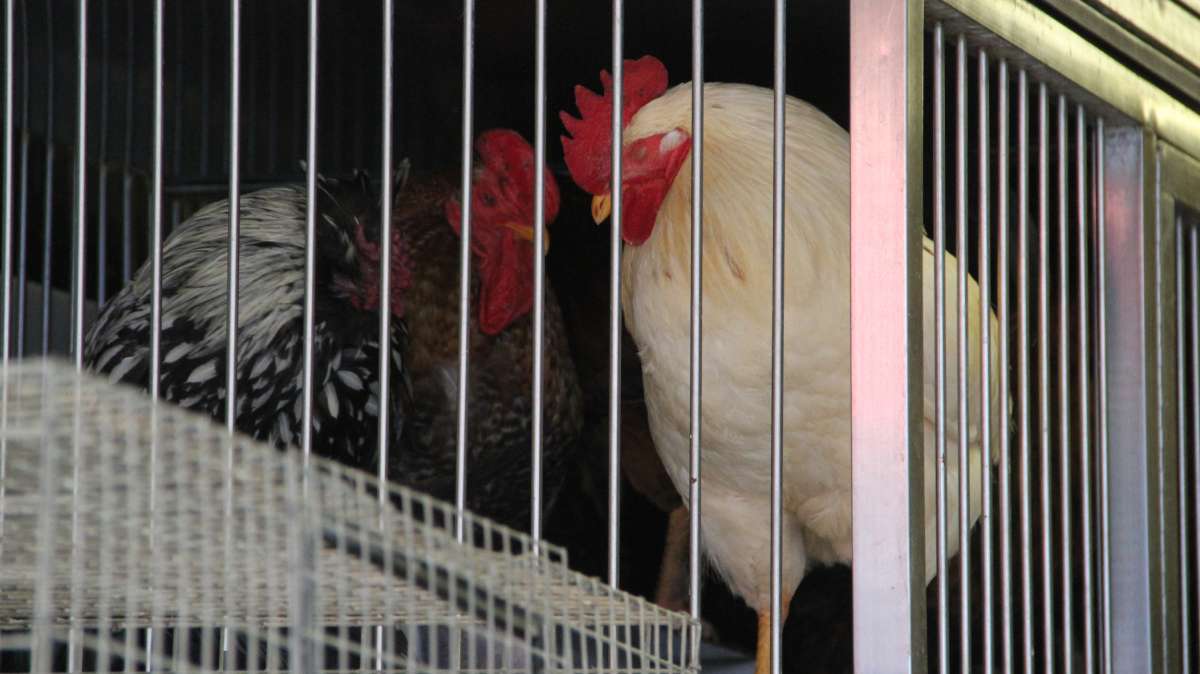
-
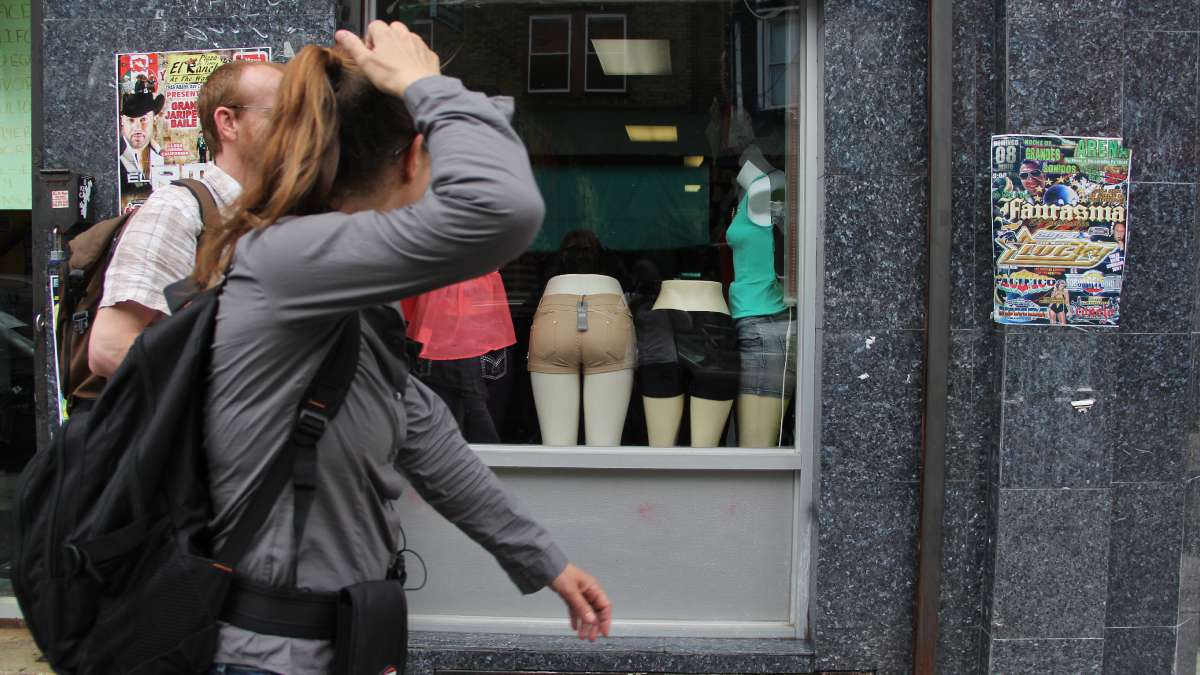
-

Dutch artists Esther Polak and Ivar van Bekkum are visiting Philadelphia for the first time and are creating their own subjective map of the city.
Dutch artists Esther Polak and Ivar van Bekkum are visiting Philadelphia for the first time. Instead of using maps to find a good restaurant or learn the history of an old building, the couple from The Netherlands are creating their own subjective map of the city.
Van Bekkum wired himself with a microphone to record his own free-associative memories and emotions while wandering through the Italian Market in South Philadelphia. Polak, his wife, silently provoked his thoughts via hand-written questions on cards, so as not to interrupt the recorded monologue.
All the while, he wore a GPS device to electronically track his movements.
“When we walked along the vegetable market, it’s really like the vegetable market at the house in Amsterdam. It feels really familiar,” said van Bekkum. “I saw small pots of basil. We have a deck here in Philadelphia and I have a garden in Amsterdam. I want plants on my deck. It evokes a stairway to more memories and thoughts.”
Van Bekkum and Polak will spend the next six months collecting impressionistic responses to Philadelphia — the smell of basil, the sound of live chickens for sale in a Ninth Street storefront, the sight of diamond-cut ice cubes melting into tubs of fresh fish — and assembling a network of volunteers to do the same. The end result, “250 Miles Crossing Philadelphia,” will be an animated Google Earth map, with sound, tracing emotional walking routes through Philadelphia.
Or, at least, it might be.
What exactly the artists are going to do for the next six months is unclear, as is the end result.
The duo is here at the invitation of the University City Science Center and the Philadelphia Redevelopment Authority. Through the PRA’s One Percent for Art program, they won a $168,000 commission to create a piece of public art with public engagement aspects. PolakvanBekkum, as they call their art practice, proposed a process-driven work whose process would be invented as part of the residency.
“What really attracted us to the project is that it isn’t A+B=Art,” said David Clayton, director of the STEAM initiatives (science, technology, engineering, art, and math) at the Science Center. “We weren’t sure what the results were going to be, but they laid out an interesting concept for the project.”
PolakvanBekkum create navigation documentaries (NavDocs) using tools including GPS devices and Google Earth to gather data regarding movement and location, and lapel microphones to gather emotional data. After dividing the city of Philadelphia into a grid of 26 segments, they are searching for volunteers to wander in each while recording their movements and reactions.
The first two months of the residency will be devoted to establishing a working process. Whatever PolakvanBekkum does, it will be structured.
“We are inspired by scientific theory,” said Polak. “The idea that your perception of space is depending on movement comes from British anthropologist Tim Ingold. We use that to start our way of thinking. But you’re very much tapping into subjectivity — this individual experience — which might be less scientific and more poetic.”
The pair walked down Ninth Street to Geno’s and Pat’s Steaks, where they saw a low mural of a bird in flight, an image repeated over and over with the bird’s flapping wings in different positions. The mural sparked a mental reverie for Polak about the work of pioneering photographer Eadweard Muybridge; van Bekkum gave the steak sandwiches across the street a thumbs-down.
“It’s all about perception,” said van Bekkum. “Movement through space, and the way people experience it, based on their own history. You and I could walk the same street, and you will have a totally different story of this street.”
PolakvanBekkum will be updating the progress of the project through their blog where the final product will ultimately live: 250Miles.net.
WHYY is your source for fact-based, in-depth journalism and information. As a nonprofit organization, we rely on financial support from readers like you. Please give today.





